Nishant Kumar
FusionINN: Invertible Image Fusion for Brain Tumor Monitoring
Apr 02, 2024Abstract:Image fusion typically employs non-invertible neural networks to merge multiple source images into a single fused image. However, for clinical experts, solely relying on fused images may be insufficient for making diagnostic decisions, as the fusion mechanism blends features from source images, thereby making it difficult to interpret the underlying tumor pathology. We introduce FusionINN, a novel invertible image fusion framework, capable of efficiently generating fused images and also decomposing them back to the source images by solving the inverse of the fusion process. FusionINN guarantees lossless one-to-one pixel mapping by integrating a normally distributed latent image alongside the fused image to facilitate the generative modeling of the decomposition process. To the best of our knowledge, we are the first to investigate the decomposability of fused images, which is particularly crucial for life-sensitive applications such as medical image fusion compared to other tasks like multi-focus or multi-exposure image fusion. Our extensive experimentation validates FusionINN over existing discriminative and generative fusion methods, both subjectively and objectively. Moreover, compared to a recent denoising diffusion-based fusion model, our approach offers faster and qualitatively better fusion results. We also exhibit the clinical utility of our results in aiding disease prognosis.
Uncertainty Quantification for Image-based Traffic Prediction across Cities
Aug 11, 2023Abstract:Despite the strong predictive performance of deep learning models for traffic prediction, their widespread deployment in real-world intelligent transportation systems has been restrained by a lack of interpretability. Uncertainty quantification (UQ) methods provide an approach to induce probabilistic reasoning, improve decision-making and enhance model deployment potential. To gain a comprehensive picture of the usefulness of existing UQ methods for traffic prediction and the relation between obtained uncertainties and city-wide traffic dynamics, we investigate their application to a large-scale image-based traffic dataset spanning multiple cities and time periods. We compare two epistemic and two aleatoric UQ methods on both temporal and spatio-temporal transfer tasks, and find that meaningful uncertainty estimates can be recovered. We further demonstrate how uncertainty estimates can be employed for unsupervised outlier detection on changes in city traffic dynamics. We find that our approach can capture both temporal and spatial effects on traffic behaviour in a representative case study for the city of Moscow. Our work presents a further step towards boosting uncertainty awareness in traffic prediction tasks, and aims to highlight the value contribution of UQ methods to a better understanding of city traffic dynamics.
Learning to reconstruct the bubble distribution with conductivity maps using Invertible Neural Networks and Error Diffusion
Jul 04, 2023Abstract:Electrolysis is crucial for eco-friendly hydrogen production, but gas bubbles generated during the process hinder reactions, reduce cell efficiency, and increase energy consumption. Additionally, these gas bubbles cause changes in the conductivity inside the cell, resulting in corresponding variations in the induced magnetic field around the cell. Therefore, measuring these gas bubble-induced magnetic field fluctuations using external magnetic sensors and solving the inverse problem of Biot-Savart Law allows for estimating the conductivity in the cell and, thus, bubble size and location. However, determining high-resolution conductivity maps from only a few induced magnetic field measurements is an ill-posed inverse problem. To overcome this, we exploit Invertible Neural Networks (INNs) to reconstruct the conductivity field. Our qualitative results and quantitative evaluation using random error diffusion show that INN achieves far superior performance compared to Tikhonov regularization.
Computational Performance Aware Benchmarking of Unsupervised Concept Drift Detection
Apr 17, 2023Abstract:For many AI systems, concept drift detection is crucial to ensure the systems reliability. These systems often have to deal with large amounts of data or react in real time. Thus, drift detectors must meet computational requirements or constraints with a comprehensive performance evaluation. However, so far, the focus of developing drift detectors is on detection quality, e.g.~accuracy, but not on computational performance, such as running time. We show that the previous works consider computational performance only as a secondary objective and do not have a benchmark for such evaluation. Hence, we propose a novel benchmark suite for drift detectors that accounts both detection quality and computational performance to ensure a detector's applicability in various AI systems. In this work, we focus on unsupervised drift detectors that are not restricted to the availability of labeled data and thus being widely applicable. Our benchmark suite supports configurable synthetic and real world data streams. Moreover, it provides means for simulating a machine learning model's output to unify the performance evaluation across different drift detectors. This allows a fair and comprehensive comparison of drift detectors proposed in related work. Our benchmark suite is integrated in the existing framework, Massive Online Analysis (MOA). To evaluate our benchmark suite's capability, we integrate two representative unsupervised drift detectors. Our work enables the scientific community to achieve a baseline for unsupervised drift detectors with respect to both detection quality and computational performance.
Normalizing Flow based Feature Synthesis for Outlier-Aware Object Detection
Feb 01, 2023



Abstract:Real-world deployment of reliable object detectors is crucial for applications such as autonomous driving. However, general-purpose object detectors like Faster R-CNN are prone to providing overconfident predictions for outlier objects. Recent outlier-aware object detection approaches estimate the density of instance-wide features with class-conditional Gaussians and train on synthesized outlier features from their low-likelihood regions. However, this strategy does not guarantee that the synthesized outlier features will have a low likelihood according to the other class-conditional Gaussians. We propose a novel outlier-aware object detection framework that learns to distinguish outliers from inlier objects by learning the joint data distribution of all inlier classes with an invertible normalizing flow. The flow model ensures that the synthesized outliers have a lower likelihood than inliers of all object classes, thereby modeling a better decision boundary between inlier and outlier objects. Our approach significantly outperforms the state-of-the-art for outlier-aware object detection on both image and video datasets.
Enhancing Fairness of Visual Attribute Predictors
Jul 14, 2022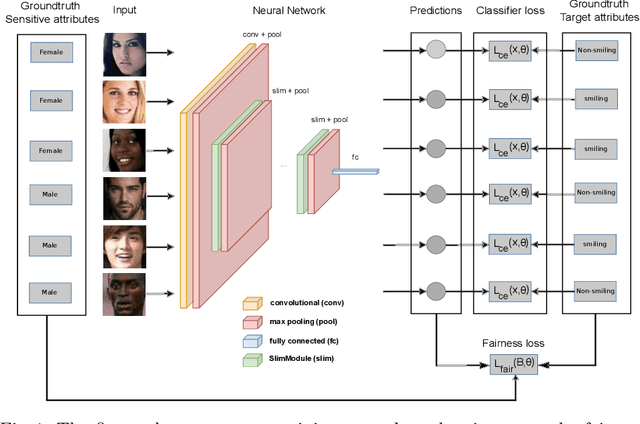
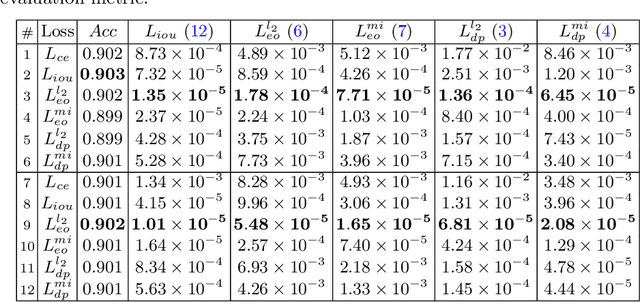
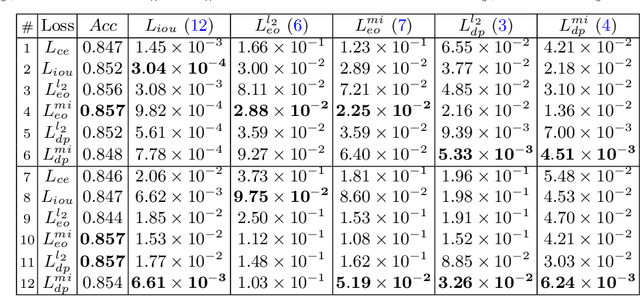
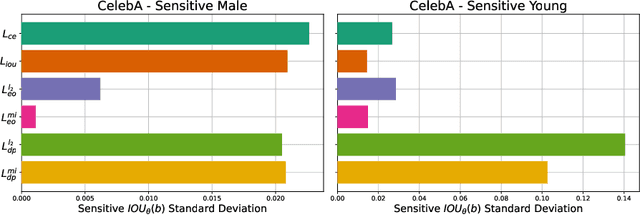
Abstract:The performance of deep neural networks for image recognition tasks such as predicting a smiling face is known to degrade with under-represented classes of sensitive attributes. We address this problem by introducing fairness-aware regularization losses based on batch estimates of Demographic Parity, Equalized Odds, and a novel Intersection-over-Union measure. The experiments performed on facial and medical images from CelebA, UTKFace, and the SIIM-ISIC melanoma classification challenge show the effectiveness of our proposed fairness losses for bias mitigation as they improve model fairness while maintaining high classification performance. To the best of our knowledge, our work is the first attempt to incorporate these types of losses in an end-to-end training scheme for mitigating biases of visual attribute predictors. Our code is available at https://github.com/nish03/FVAP.
TransDrift: Modeling Word-Embedding Drift using Transformer
Jun 16, 2022
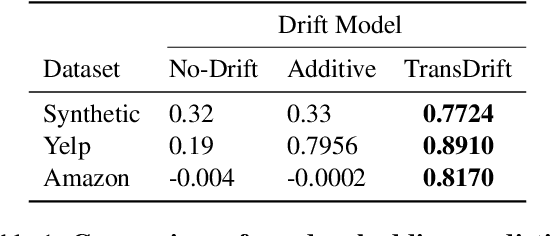

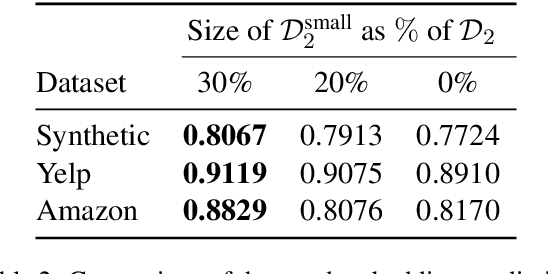
Abstract:In modern NLP applications, word embeddings are a crucial backbone that can be readily shared across a number of tasks. However as the text distributions change and word semantics evolve over time, the downstream applications using the embeddings can suffer if the word representations do not conform to the data drift. Thus, maintaining word embeddings to be consistent with the underlying data distribution is a key problem. In this work, we tackle this problem and propose TransDrift, a transformer-based prediction model for word embeddings. Leveraging the flexibility of transformer, our model accurately learns the dynamics of the embedding drift and predicts the future embedding. In experiments, we compare with existing methods and show that our model makes significantly more accurate predictions of the word embedding than the baselines. Crucially, by applying the predicted embeddings as a backbone for downstream classification tasks, we show that our embeddings lead to superior performance compared to the previous methods.
InFlow: Robust outlier detection utilizing Normalizing Flows
Jun 10, 2021

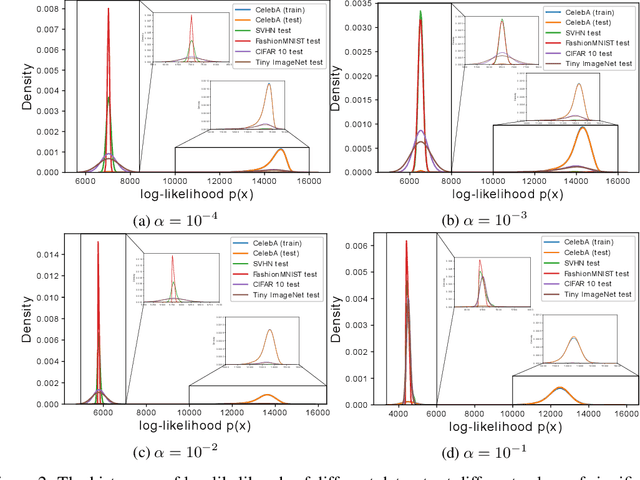
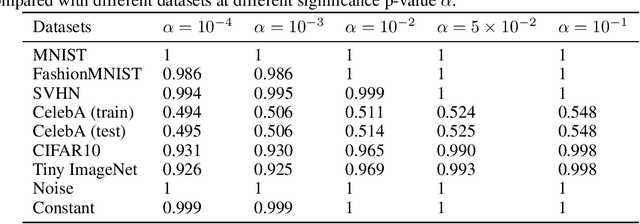
Abstract:Normalizing flows are prominent deep generative models that provide tractable probability distributions and efficient density estimation. However, they are well known to fail while detecting Out-of-Distribution (OOD) inputs as they directly encode the local features of the input representations in their latent space. In this paper, we solve this overconfidence issue of normalizing flows by demonstrating that flows, if extended by an attention mechanism, can reliably detect outliers including adversarial attacks. Our approach does not require outlier data for training and we showcase the efficiency of our method for OOD detection by reporting state-of-the-art performance in diverse experimental settings. Code available at https://github.com/ComputationalRadiationPhysics/InFlow .
Applications of deep learning in traffic congestion alleviation: A survey
Feb 19, 2021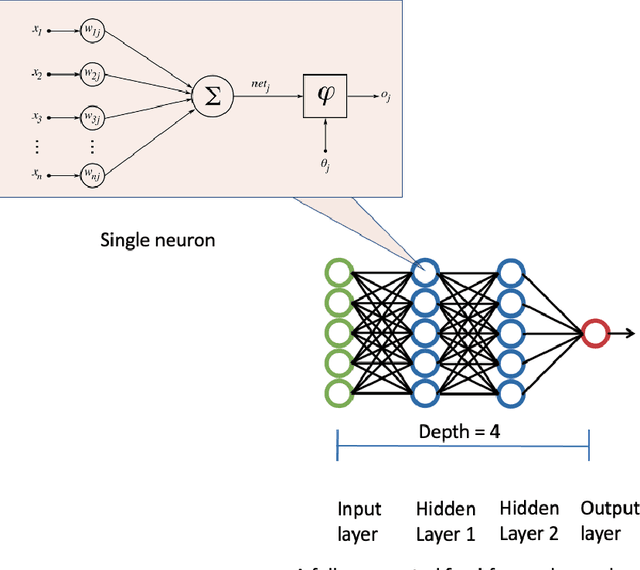
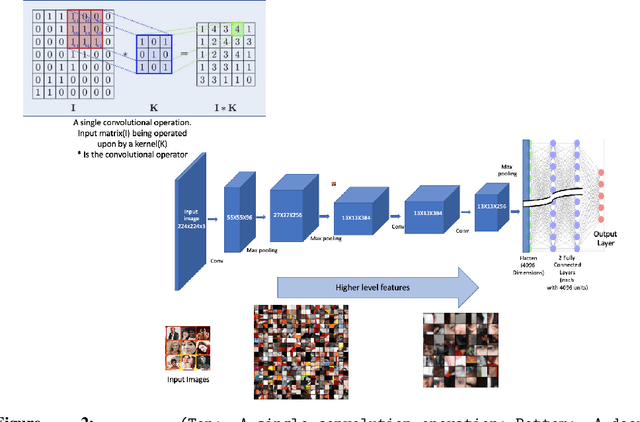

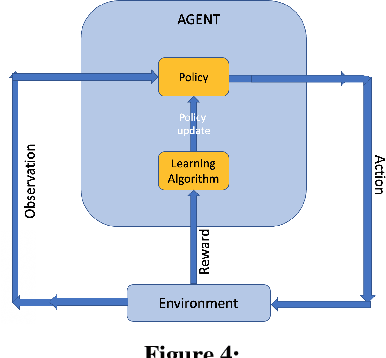
Abstract:Prediction tasks related to congestion are targeted at improving the level of service of the transportation network. With increasing access to larger datasets of higher resolution, the relevance of deep learning in such prediction tasks, is increasing. Several comprehensive survey papers in recent years have summarised the deep learning applications in the transportation domain. However, the system dynamics of the transportation network vary greatly between the non-congested state and the congested state -- thereby necessitating the need for a clear understanding of the challenges specific to congestion prediction. In this survey, we present the current state of deep learning applications in the tasks related to detection, prediction and propagation of congestion. Recurrent and non-recurrent congestion are discussed separately. Our survey leads us to uncover inherent challenges and gaps in the current state of research. Finally, we present some suggestions for future research directions as answers to the identified challenges.
FuseVis: Interpreting neural networks for image fusion using per-pixel saliency visualization
Dec 06, 2020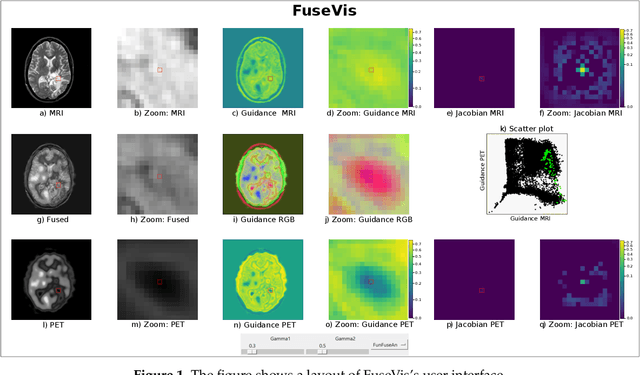



Abstract:Image fusion helps in merging two or more images to construct a more informative single fused image. Recently, unsupervised learning based convolutional neural networks (CNN) have been utilized for different types of image fusion tasks such as medical image fusion, infrared-visible image fusion for autonomous driving as well as multi-focus and multi-exposure image fusion for satellite imagery. However, it is challenging to analyze the reliability of these CNNs for the image fusion tasks since no groundtruth is available. This led to the use of a wide variety of model architectures and optimization functions yielding quite different fusion results. Additionally, due to the highly opaque nature of such neural networks, it is difficult to explain the internal mechanics behind its fusion results. To overcome these challenges, we present a novel real-time visualization tool, named FuseVis, with which the end-user can compute per-pixel saliency maps that examine the influence of the input image pixels on each pixel of the fused image. We trained several image fusion based CNNs on medical image pairs and then using our FuseVis tool, we performed case studies on a specific clinical application by interpreting the saliency maps from each of the fusion methods. We specifically visualized the relative influence of each input image on the predictions of the fused image and showed that some of the evaluated image fusion methods are better suited for the specific clinical application. To the best of our knowledge, currently, there is no approach for visual analysis of neural networks for image fusion. Therefore, this work opens up a new research direction to improve the interpretability of deep fusion networks. The FuseVis tool can also be adapted in other deep neural network based image processing applications to make them interpretable.
 Add to Chrome
Add to Chrome Add to Firefox
Add to Firefox Add to Edge
Add to Edge